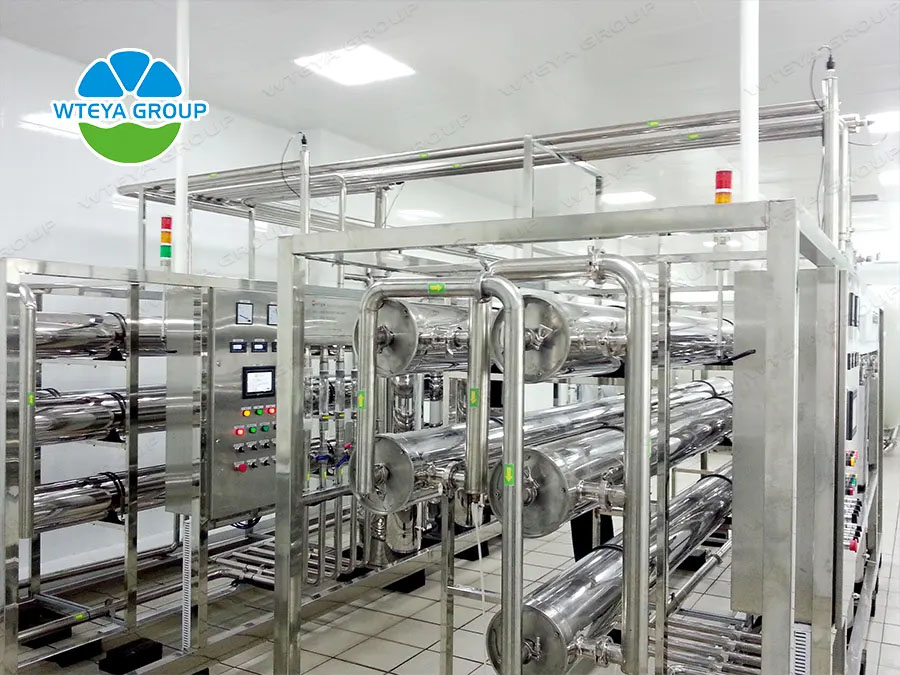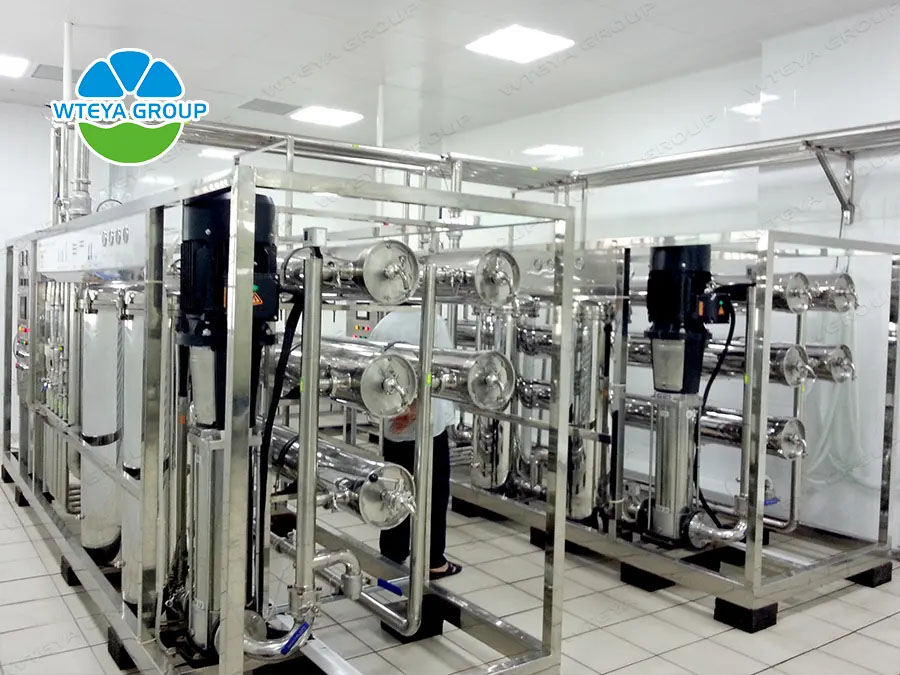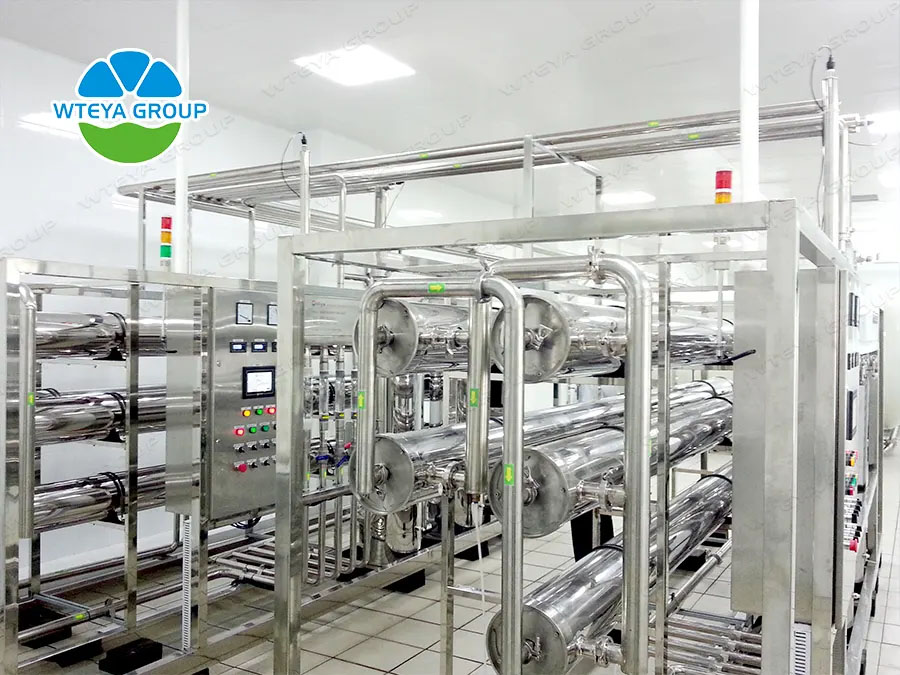How Reverse Osmosis Filtration Works: A Guide to Cleaner, Healthier Water
Reverse Osmosis (RO) filtration is one of the most effective methods for removing contaminants from drinking water, providing a reliable solution for homes, businesses, and industries looking to improve water quality. This guide will walk you through how RO filtration works, the advantages it offers, the applications of this technology, and the unique design features that make RO systems a popular choice. If you’re interested in achieving cleaner, healthier water, understanding the benefits of reverse osmosis will be invaluable.

Key Selling Points of Reverse Osmosis Filtration
Effective Contaminant Removal: Reverse osmosis is highly effective at removing a broad range of contaminants, including bacteria, viruses, heavy metals, and chemical pollutants. With multiple filtration stages, an RO system can filter out up to 99% of impurities, providing crystal-clear, purified water.
Healthier Drinking Water: By reducing or eliminating harmful substances reverse osmosis filtration significantly improves water quality, making it safer for consumption. This not only contributes to overall health but also reduces the risk of waterborne illnesses and long-term health complications associated with contaminants like lead or pesticides.
Enhanced Taste and Odor: RO systems also improve the taste and odor of water by removing chlorine and other chemicals, making water more palatable. This is a significant advantage for those who are sensitive to the smell or taste of treated water or for those who want to enhance the flavor of their cooking and beverages.
Environmentally Friendly Alternative: Investing in a reverse osmosis system reduces reliance on single-use plastic bottles. This eco-friendly choice not only minimizes plastic waste but also cuts down on the environmental impact of transporting bottled water.
Cost-Effective Solution for Quality Water: While the initial investment in an RO system may seem high, it can save significant money over time by eliminating the need for bottled water. This cost-effectiveness, combined with minimal maintenance, makes RO filtration a practical long-term solution for households and businesses.
Addressing Common Water Quality Pain Points
Contaminated Municipal Water Supplies: Municipal water supplies often contain trace amounts of contaminants such as chlorine, fluoride, and other chemicals used in treatment processes. RO filtration provides an added layer of purification, removing these unwanted elements and making tap water safer and cleaner.
Well, Water Quality Issues: For those relying on well water, issues such as high mineral content, heavy metals, and even microbial contamination can be a concern. RO systems can filter out these pollutants effectively, offering a comprehensive solution for homes with well water.
Protection from Industrial and Agricultural Contaminants: Industrial pollution and agricultural runoff can introduce harmful chemicals, pesticides, and other contaminants into the water supply. RO systems provide a critical line of defense, ensuring that these pollutants do not reach your tap.
Hard Water and Scale Buildup: In regions with hard water, mineral buildup can cause scaling in appliances, plumbing, and water fixtures. An RO system helps to soften the water by filtering out dissolved minerals like calcium and magnesium, extending the lifespan of household equipment and reducing maintenance needs.
Application Areas for Reverse Osmosis Filtration
Residential Use: RO filtration systems are highly popular in homes, where they provide clean, great-tasting water for drinking, cooking, and ice-making. They’re often installed under kitchen sinks or as whole-house systems, ensuring that every tap dispenses purified water.
Commercial and Food Service Industries: Restaurants, coffee shops, and food service establishments benefit from RO systems as they enhance the flavor of food and beverages by using purified water. Clean water is also essential for maintaining consistent product quality in these industries.
Healthcare and Laboratory Settings: In healthcare facilities and laboratories, where water purity is essential, RO filtration systems help maintain hygiene and prevent contamination. High-purity water is vital for patient safety, equipment sterilization, and conducting research.
Industrial Applications: Many industries, including pharmaceuticals, semiconductors, and food processing, rely on reverse osmosis systems for purified water. The ability of RO systems to produce consistently high-quality water ensures smooth operations, especially in processes that require ultra-pure water.
Agricultural and Aquaculture Applications: Reverse osmosis can be used to improve water quality for irrigation in agriculture and aquaculture systems. By reducing salinity and impurities, RO-treated water supports healthier crop growth and sustainable fish farming.
Advantages of Reverse Osmosis Filtration
Superior Filtration Efficiency: Reverse osmosis uses a semi-permeable membrane to filter out even the smallest contaminants, including viruses and ions. This level of filtration is unmatched by other methods like carbon filtration, which only reduces certain chemicals and particles.
Versatile and Scalable: RO systems are available in various sizes and capacities, making them adaptable to small households, large commercial kitchens, and industrial facilities. This scalability ensures that RO systems can meet diverse water purification needs.
Minimal Waste Production: Modern reverse osmosis systems are designed to minimize water waste. Many systems now come with water-saving features or are paired with efficient pre-filters and post-filters to ensure that every drop is utilized effectively.
Low Maintenance Requirements: RO systems generally require minimal maintenance. Replacing the filters and membranes periodically is usually enough to keep the system running smoothly, making it a convenient option for both households and businesses.
Long Lifespan: Quality RO systems are built to last, often providing clean water for a decade or longer with proper care. This durability makes them a worthwhile investment, reducing the need for frequent replacements and ensuring long-term satisfaction.
Design Features of Reverse Osmosis Filtration Systems
Multi-Stage Filtration Process: Reverse osmosis systems typically consist of several filtration stages, each targeting specific contaminants. Most systems include a pre-filter (to remove larger particles like sediment), a carbon filter (to eliminate chlorine and other chemicals), the RO membrane (for comprehensive filtration), and a post-filter (to ensure the best taste and quality).
Compact and Space-Saving Design: Many home RO systems are designed to be compact, fitting conveniently under the sink or mounted on the wall. This space-saving feature is ideal for households with limited kitchen space, allowing easy installation without compromising functionality.
Automatic Shutoff Valves: High-quality RO systems come with automatic shutoff valves that prevent water waste by halting production when the storage tank is full. This feature saves energy and reduces water consumption, making the system more eco-friendly.
Water Quality Monitoring Indicators: Some advanced RO systems feature indicators that monitor water quality, alerting users when filters need replacement. This ensures that water quality remains high and provides a convenient reminder for system maintenance.
Durable, High-Quality Materials: RO systems are constructed using durable, high-quality materials designed to withstand years of use. Stainless steel, high-grade plastics, and reinforced components are often used to ensure reliability, even under continuous operation.
Value of Reverse Osmosis Filtration Systems
Improved Health and Safety: By removing contaminants that may pose health risks, RO systems provide safer drinking water, supporting the health of families, employees, and customers. This value is particularly essential for children, the elderly, and those with compromised immune systems who may be more sensitive to impurities.
Enhanced Taste and Quality of Food and Beverages: Pure water enhances the taste of food, tea, coffee, and other beverages. RO water improves the flavor of everything it touches, offering a noticeable difference for culinary purposes and ensuring a higher quality dining experience in food service settings.
Protection for Plumbing and Appliances: RO filtration reduces scale buildup in pipes, water heaters, and other appliances by filtering out minerals like calcium and magnesium. This not only extends the lifespan of these devices but also improves their efficiency and reduces the need for frequent repairs.
Environmental Sustainability: By providing a reliable source of clean drinking water, RO systems reduce dependence on bottled water, decreasing plastic waste and lowering the carbon footprint associated with the production and transportation of single-use bottles.
Financial Savings Over Time: While the initial cost of an RO system can be an investment, it saves money in the long run by reducing the need for bottled water and lowering appliance maintenance costs. With less money spent on purchasing filtered or bottled water, the system pays for itself over time.
Customizable Options for Diverse Needs: With various sizes and filter combinations, RO systems can be tailored to specific needs, from household drinking water to commercial or industrial applications. This flexibility allows users to choose a system that aligns with their unique water quality requirements.
Conclusion
Reverse osmosis filtration offers an efficient, reliable, and environmentally friendly solution for obtaining clean, high-quality water. With superior contaminant removal, versatile applications, and robust design features, RO systems deliver unparalleled value to households, businesses, and industries alike. By investing in an RO system, users not only protect their health but also enjoy the benefits of improved taste, reduced maintenance, and long-term cost savings. In an era where clean water is a priority, reverse osmosis filtration is truly the key to healthier, better-tasting water for all.









